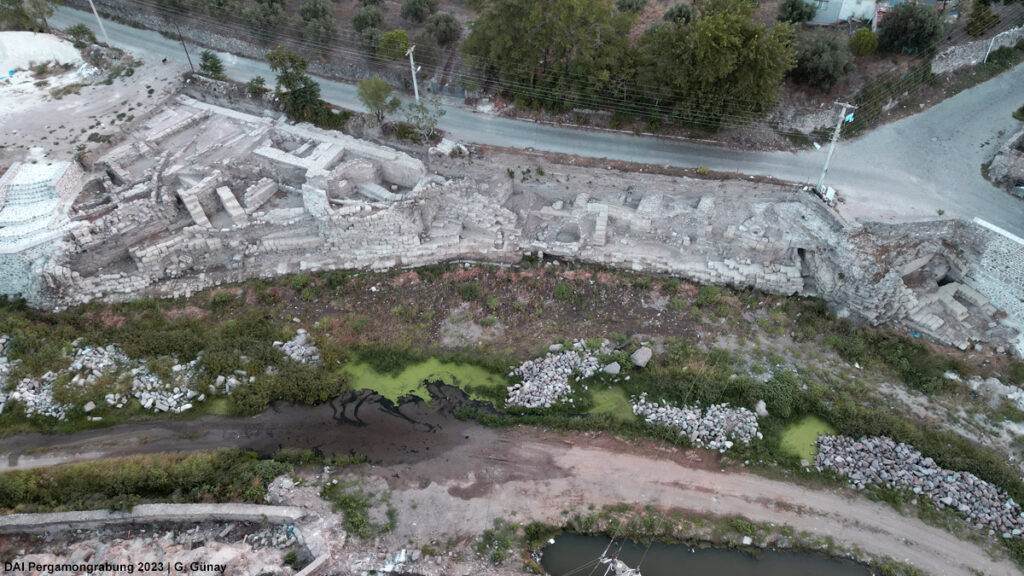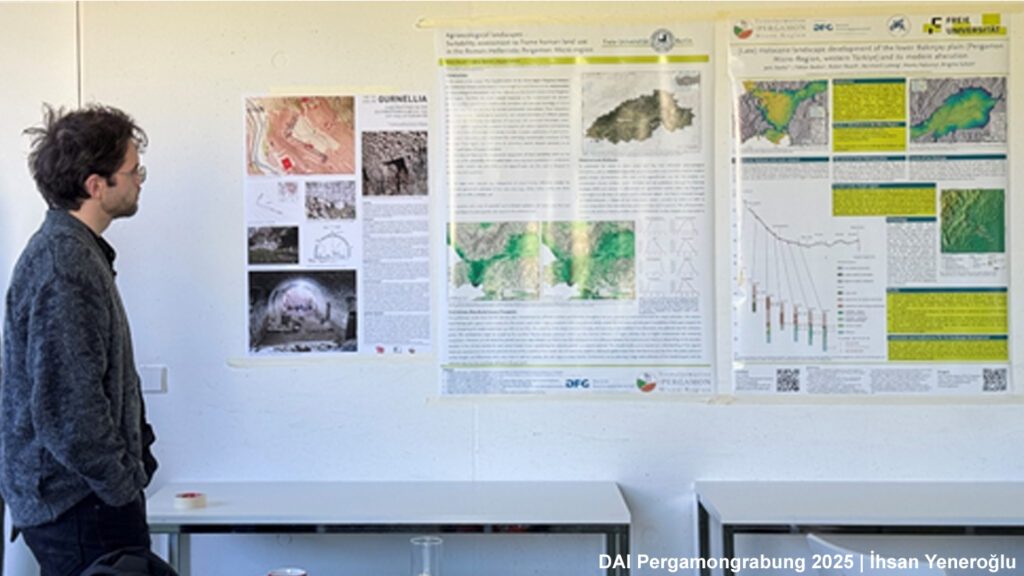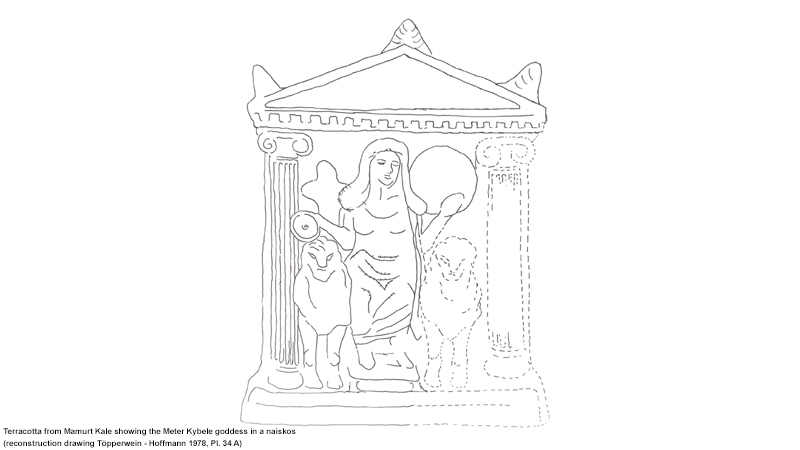In 2019 we started a survey project in the vicinity of Pergamon which covers the hills west and northwest of the ancient city. A starting point for the investigation was given by the question concerning the relationship between the ancient city and the sanctuary of Asclepios. Our investigations show that the extra-urban sanctuary became a part of Roman Imperial Pergamon by the extension of the city. It is very likely that the so called Holy Street between the city and the sanctuary played a huge role in this incorporation process as an important and highly frequented connection route. Geophysical investigations and findings in the unexcavated areas north and south of the columnar road next to the sanctuary show that they were developed too. Very likely these buildings belonged to the infrastructure of the sanctuary which has been frequented by a huge audience especially during in the 2nd century AD.
The investigation of the landscape around the sanctuary and further north offers first insights into ancient land use in the vicinity of the city. Since rural buildings seem to be very rare we assume the land was farmed by the city dwellers. However, instead of villae rusticae or farmsteads the area was characterised by necropolises and activities of building material extraction. Graves and grave buildings from the Hellenistic and the Roman Imperial Period occurred in a wide half circle on the slopes around Asklepieion and Amphitheatre. A newly discovered inscription of a grave building with a columnar architecture belonged to a bird watcher (Augur), who was already known from a dedicatory inscription. This particular case and the remains of very representative buildings on a terrace – probably temple-graves – overshowing the Asklepieion indicate the popularity of this extensive burial site among the upper strata of Roman Imperial Pergamon.
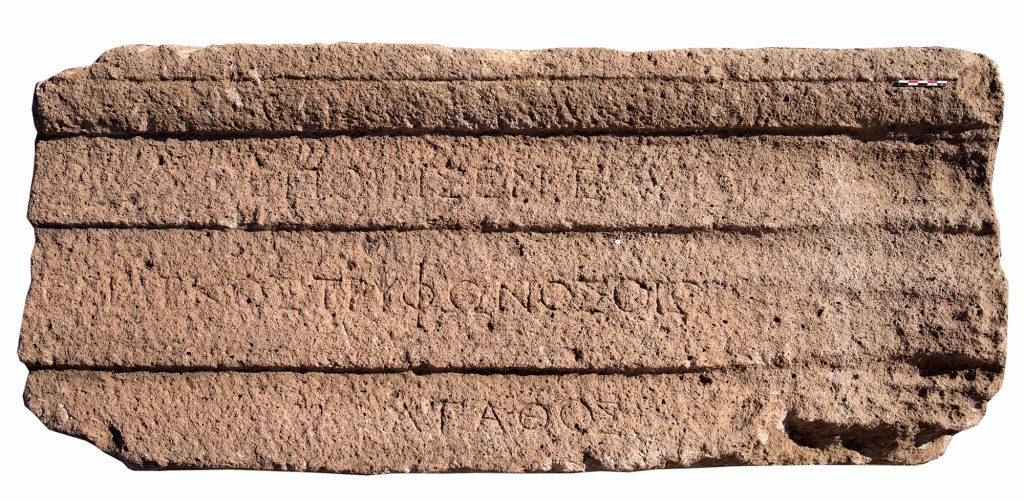
Not only the Roman extension of Pergamon in the plain south of the city-hill on the alluvial fan of the Selinos and Kaikos rivers but also the huge building complex of the Asklepieion and the monumental Amphitheatre needed huge amounts of building material during construction. Most of the buildings consist of the local volcanic andesite and in smaller amounts of a yellowish tufa. Both stones were extracted in the hill area under investigation and different methods of extraction have been detected. We found several quarries which consist of steep slope where the material was extracted, a slag heap and the already emptied area in between. Some of these quarries were still in use until recent time which makes it difficult to differentiate between ancient and younger traces of activity. Since erosion brought huge amounts of andesite to the surface in a natural way, most of the stone could have been extracted without quarrying. This could be an explanation for the stone-free areas around the Amphitheatre, which are in striking contrast with the rocky terrain nearby. Perhaps we are observing here the remains of a very economic but today almost invisible method of stone extraction.
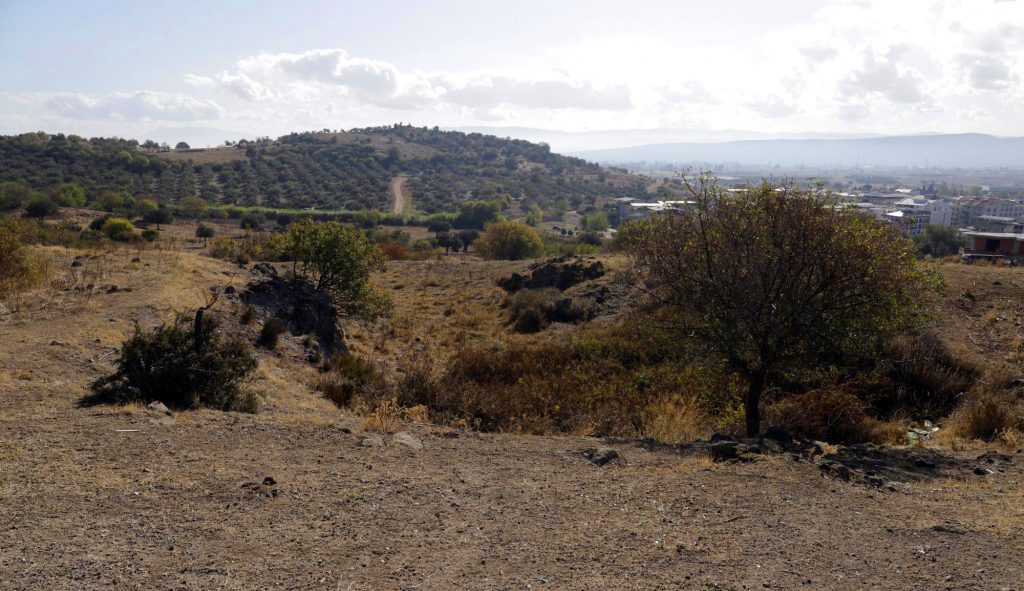
To get an idea about the chronological development of the area we will analyse the findings which is planned for next year.

